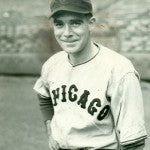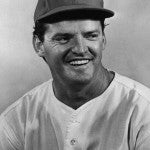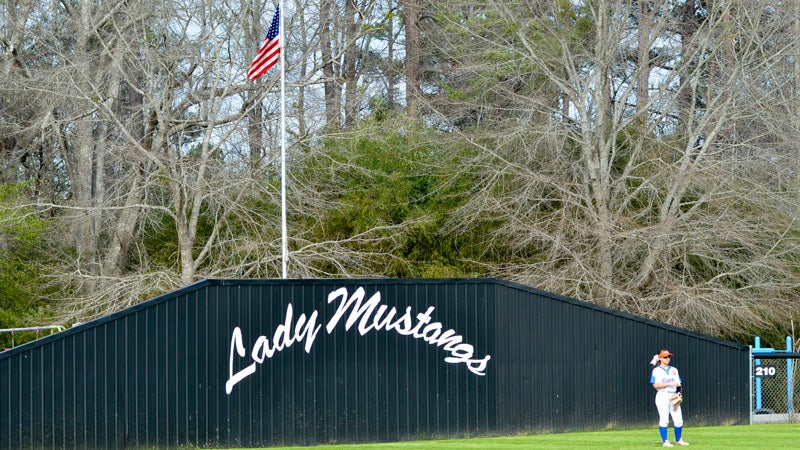Hayes, Carroll preeminent parts of county’s baseball tradition
Published 3:28 pm Friday, September 25, 2015
With the help of his wife, Alice Brooks Hayes, he served in that capacity for 12 years.
Missing the competitiveness of sports, Hayes learned to play golf and participated in numerous tournaments of the Blind Golfers Association.
In February 1976, in recognition of his many accomplishments, Minter Carney Hayes was inducted into the Alabama Sports Hall of Fame. Bart Starr, quarterback of the World Champion Green Bay Packers, was a fellow inductee.

Natural athlete: Hayes was born in 1906, lettered in every sport at Chilton County High School, played collegiately at the University of Alabama and became known as “the finest double-play second baseman in the league.”
The baseball park in Clanton, Jack Hayes Field, is dedicated in his honor and memory.
Many residents of Clanton fondly remember seeing Hayes, accompanied by his Boxer breed service dog, Abono, making his way along the sidewalks of downtown Clanton. During the remaining years of his life, five dogs of the same breed served Hayes in this capacity.
Hayes passed away on Feb. 9, 1983, and was laid to rest in the Clanton Cemetery. Fittingly, Abono, the first and most faithful of his service dogs, rests peacefully at the foot of his grave.
On May 2, 1941, as the baseball career of Hayes had come to an end, Clay Palmer Carroll was born in Clanton.
The son of a cotton mill worker, Carroll played baseball at Chilton County High School before being discovered by a professional scout while pitching for a team sponsored by a local minister in Clanton.
In 1961, Carroll was offered $1,000 to sign with the Milwaukee Braves. He used the money to buy his first automobile, a 1954 Ford that he drove to report to the team training camp.
For the next three years, he pitched for various minor league teams before making his major league debut in 1964 in a game between Milwaukee and the St. Louis Cardinals.
Early in his career, Carroll would return to Chilton County during the off season and work part-time as a deputy sheriff.
In 1965, the Braves relocated to Atlanta, where Carroll began to distinguish himself as a major league pitcher.
In 1968, “Hawk,” a nickname given to Carroll by teammates because of his predatory approach to opposing batters, was traded to the Cincinnati Reds.
During his seven-year career with the “Big Red Machine,” Carroll’s teammates included hall of fame catcher Johnny Bench and Pete “Charlie Hustle” Rose.

Reds’ hurler: Carroll was an integral part of the Cincinnati Reds’ teams of the 1970s and was the winning pitcher in Game 7 of the 1975 World Series.
Best known as a relief pitcher, the media guide of the 1971 Cincinnati Reds described Carroll as a “familiar sight, with his plow boy gait, strolling to the mound with a couple on and a lead to protect.”
Reds catcher Johnny Bench once described Carroll as “the Pete Rose of the pitching staff” because of his determination to win and enthusiasm for the game of baseball.
During his career with Cincinnati, Carroll was rated as one of the premier relief pitchers in baseball, appearing in three World Series.
In 1975, Carroll pitched in five of the seven games of the World Series and was the winning pitcher in Game 7 in which Cincinnati clinched the title of World Champions.
As a pitcher for the Reds, Carroll was twice selected as a National League All-Star. In 1972, he set the National League record of 37 saves, a record that stood for 12 years.
He also received the Sporting News Fireman of the Year award, presented to the best relief pitcher in each league of Major League Baseball.
In August 1977, 45 years after Hayes made his debut for the White Sox, Clay Carroll was traded to Chicago. Carroll also pitched for the Pittsburgh Pirates and Milwaukee Brewers before retiring in 1979, bringing an end to a remarkable career.
Carroll was honored with induction into the Cincinnati Reds Hall of Fame in 1980 in recognition of his stellar career as a member of the Big Red Machine.
In 1992, the Alabama Sports Hall of Fame selected Carroll for induction. Following in the footsteps of Hayes, Carroll became the second Major League baseball player from Chilton County to receive this honor.
The careers of Jackie Hayes and Clay Carroll are now enshrined in the almanacs of baseball history. But to a greater degree than success in baseball, their legacy is a testament that through determination, dedication and perseverance, no obstacle is too big to overcome.



